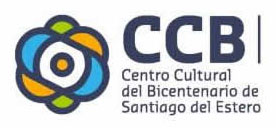THE ANTHROPOLOGICAL AND NATURAL SCIENCES “EMILIO Y DUNCAN WAGNER” MUSEUM
The foundation of this Museum dates back to July 29th 1917, the year in which the “Museo Arcaico” was created,. It has its headquarters in the Centenario School, in which there was the archaeological and ethnographic collection donated in 1916 by the lawyer, writer, diplomat, archaeologist and politician Dr. Alejandro Gancedo. This patrimony was made up of 3,000 very heterogeneous pieces, some of them collected by purchase, but most of them had been obtained during his explorations in the field.
Since then, these private properties became public, being exhibited to the whole society.
The French brothers Emilio and Duncan Wagner arrived in Santiago del Estero between the 1920s and 1940s.
Emilio Wagner entered the service of the Provincial Government in 1924 and was commissioned to reorganise the Archaic Museum.
In 1927 he carried out numerous archaeological campaigns and naturalistic expeditions to the interior of the province, ostensibly increasing its heritage, representativeness and value.
The government authorities rewarded his sustained cultural work by appointing him Director of the Museum, which, in 1930 was renamed the Archaeological Museum. Later on his brother Duncan was named his colaborator.
Emilio was the field scholar, researcher-explorer and Director of the Archaeological Museum. Duncan was the lecturer, the illustrator and co-director of the Museum.
Both brothers complemented each other in the task of documenting the past of Santiago del Estero and then interpreting it. The result was their well-known work “La Civilización Chaco-Santiagueña y sus correlaciones con las del Viejo y Nuevo Mundo” (The Chaco-Santiagueño Civilisation and its correlations with those of the Old and New World), which appeared in a luxury, meticulously illustrated print. The official edition was financed by the Government of the Province of Santiago del Estero and produced in Buenos Aires by the Printing Company in 1934.
The work of the Wagner brothers gave prestige to the province, for their pioneering character in archaeological activity and for their positive achievements, underlining that in the country they were supporters of the “Comparative Studies” in the cultural field. This type of studies led them to develop an interesting but debated hypothesis about the “Empire of the Plains”, a civilisation established in the provincial territory in distant times, long before the Spanish Conquest, with worldwide relations, of which they emphasised the analogies they observed in art and decoration features.
Emilio Wagner died in this city in 1949, receiving funeral honours for his great contribution to the culture of Santiago del Estero.
As a tribute to the memory of the brothers, in 1952 the institution changed its name to: “Museo Arqueológico Provincial Emilio y Duncan Wagner” (Emilio and Duncan Wagner Provincial Archaeological Museum).
The Archaeological, Anthropological, Palaeontological and Natural Heritage that the Museum possesses constitutes a rescue of the history of the cultures of the past of Santiago del Estero; an indispensable starting point for the study and research of future generations.
In 1992, under the direction of Dr. Amalia Gramajo de Martínez Moreno, by means of Decree Series G Nº 1163, the Museum changed its name to “Museum of Anthropological and Natural Sciences “Emilio and Duncan Wagner”, due to the nature of its collections.
EVOLUTION OF THE MUSEUM’S NAME.
1917-Archaic Museum
1930-Provincial Archaeological Museum
1952-Emilio and Duncan Wagner Provincial Archaeological Museum
1992-Museum of Anthropological and Natural Sciences “Emilio and Duncan Wagner”.
This Museum is an unavoidable reference in the definition of the identity of Santiago del Estero. It is a space of integration and expression of diversity that promotes the appropriation of heritage by the people and the awareness of cultural rights, which by legitimacy belong to them.


